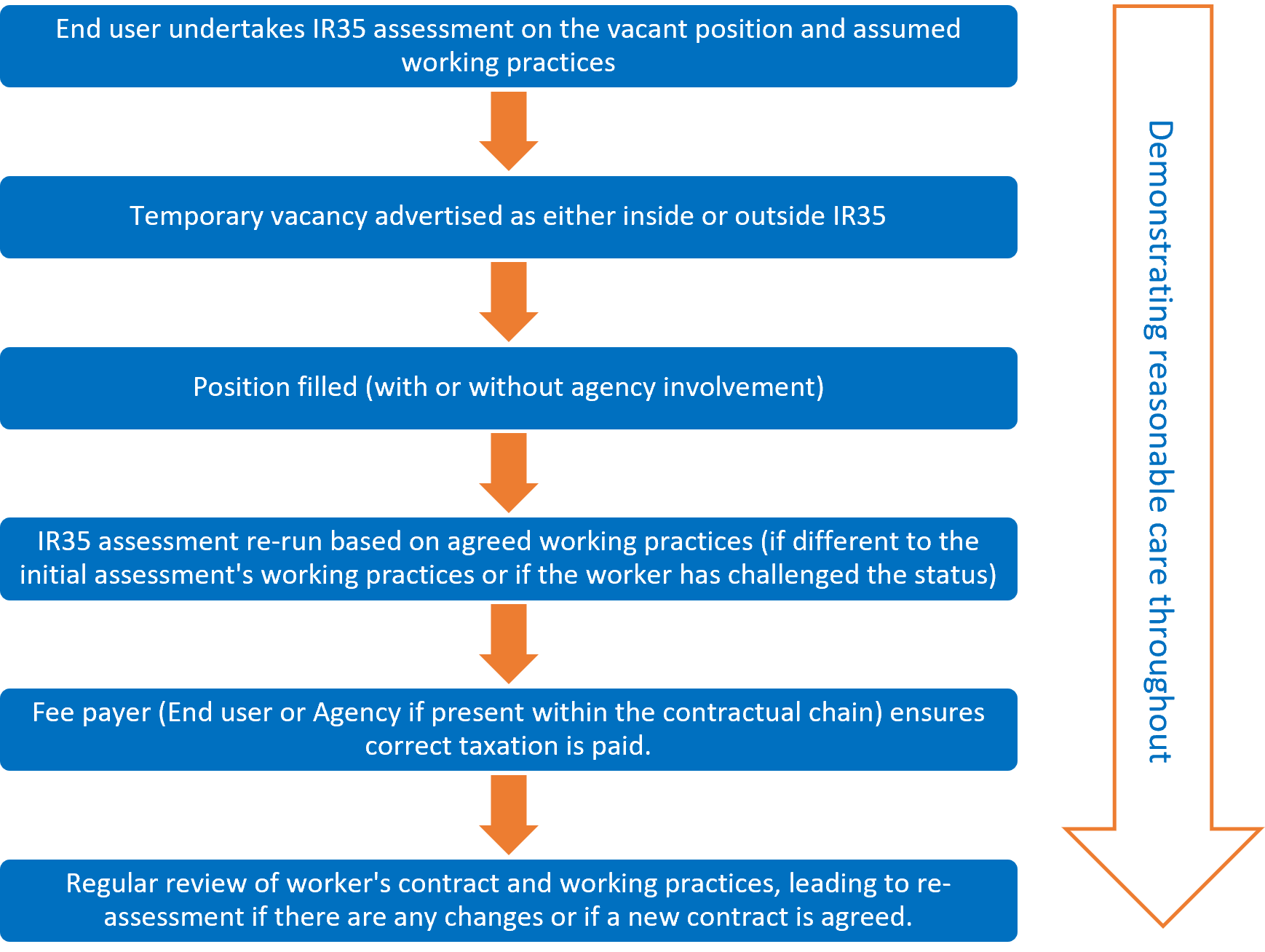
IR35 - Onward and Upwards
Employing contract, temporary or interim workers is a necessary and integral element of a large proportion of UK companies’ talent supply. The benefits are wide ranging and include flexible, quick and cost-efficient access to staffing for situations such as parental, long service leave or sick leave, niche skill requirements, business growth, business development or one-off project delivery. Equally attractive are the benefits to the contractors themselves, such as work/life balance, being able to hand pick projects, actively develop certain skillsets and generally have more control over how and where they work.
So what is IR35 and what do employers need to know to make sure they access contract talent compliantly?
IR35 is the framework that was introduced back in 2000 to ensure contractors that undertake work in the same way as permanent employers are liable to pay the same NI and tax as permanent workers. Responsibility of determining statuses and liability of getting it wrong has evolved over the years and most recently updates have been rolled out so now larger private sector organisations must ensure individual contractors are assessed to be “inside” or “outside” of IR35 and then their employment and therefore tax obligations are accordingly compliant.
The much-anticipated April 2021 legislative changes to IR35 have now passed, and thankfully the sky didn’t fall in. Maybe it is because we have had other things on our mind, or maybe it is simply because we all know what to do when to be 100% compliant all the time? I make this latter point tongue in cheek because the reality is, despite plenty of warning, many organisations are still very much on the backfoot.
After months, or rather years, of talking about preparedness, we are now in a position where working to the IR35 off payroll rules is not merely a checkbox exercise that we can now say “been there, done that”. It absolutely must be embedded into our hiring and ongoing employment processes when working with contractors from here on in. Much like talk of a post pandemic “new normal”, what does the post IR35 changes “new normal” look like?
The organisations we work with vary in size and scope and unsurprisingly there is a similarly broad range of approaches to incorporating IR35 assessments. Just being aware of responsibilities is not enough, an audit trail is essential to mitigate liability and provide a framework for any queries or challenges that may arise. Put simply, what is needed is a robust process that is simple to follow, stands up to scrutiny and adds value to the talent supply chain rather than hinder it.
Below are the simple steps that need to be undertaken when hiring contract workers.

Our advice is to research the tools available to you and use a tried and tested assessment tool such as our own IR35 Complete to manage the process, and to ensure you demonstrate reasonable care. Using IR35 Complete means you fulfil your requirements for compliant and accurate workforce management in many of the areas that other tools such as that HMRCs CEST, fall short. A summary of the benefits include:
• Aligned with established case law and audited by independent experts
• Makes a firm judgement in borderline cases
• Outside IR35 determination can be separately insured to cover all parties in the supply chain
• Easy to use, the tool produces instant SDS
• Includes vendor/PSL management functionality
• Reporting tool that can be monitored by your company
• Complete supply chain solution - clear and transparent communication between all parties in the supply chain
• Access to IR35 and tax experts for tailored advice & guidance
For more information please contact your Carrington West consultant or James Fernandes.
